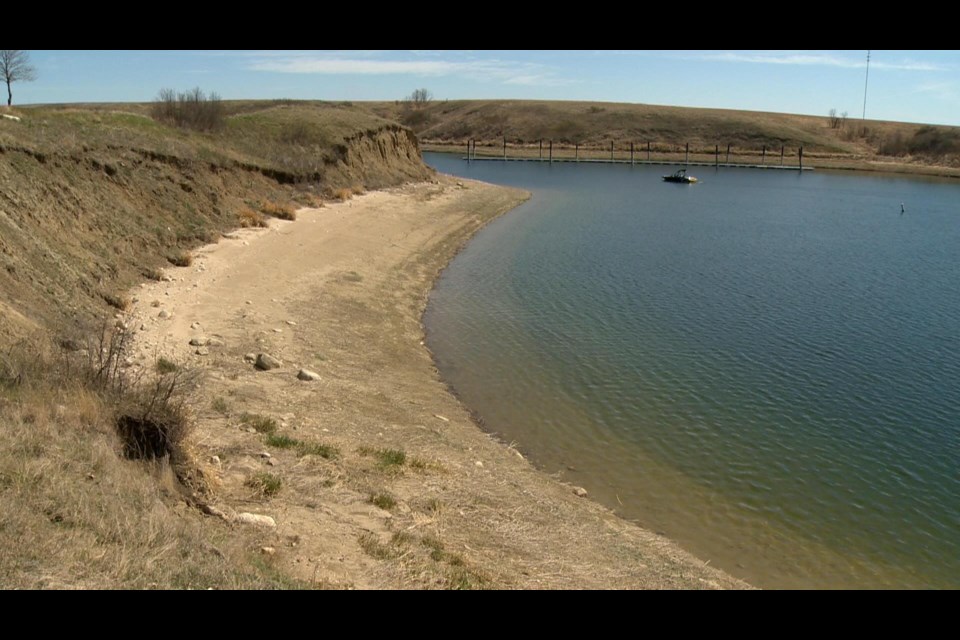The proposed irrigation expansion project at Lake Diefenbaker is viable, would have attractive returns on investment, and could yield positive social and economic benefits, an engineering firm says.
“This is also an opportunity to transform the Prairie region into one of the world’s major food-producing areas,” said Wayne Clifton, CEO of Clifton Associates Ltd., the engineering firm tasked with overseeing the $4-billion initiative.
Clifton, along with Water Security Agency (WSA) executive director Clinton Molde, spoke about the “transformative” project during an online forum that the Saskatchewan Mining Association recently hosted.
The land is poor
The soil condition of the Prairies was made known after Capt. John Palliser explored Rupert’s Land — today’s Western Canada — in 1859, Clifton explained. He mapped the land south of the North Saskatchewan River and later declared that much of the southern prairie land was too arid to support agriculture.
This led to the creation of “Palliser Triangle,” an area that starts in western Manitoba, runs northwest through Saskatoon and North Battleford to near Slave Lake, Alta., then south to the Alberta-British Columbia-Montana border and east through Saskatchewan back to Manitoba.
European immigrants came to Western Canada in the late 1800s and early 1900s, but this turned into a “disaster” because of erosion and severe drought, which emptied many parts of the southern Prairies, continued Clifton. The Prairie Farm Rehabilitation Administration (PFRA) was then created since the government wanted to keep farmers in the affected areas.
The PFRA also wanted to bring water from Lake Diefenbaker to the Lumsden area via the Upper Qu’Appelle South Water conveyance system (UQSWCS).
Launch of irrigation project
The province launched the West Side irrigation project around 1967, which was bounded by the South and North Saskatchewan rivers and featured “very favourable soil conditions.” The initiative was a staged, long-term plan to bring sustainable benefits and climate adaptation to central Saskatchewan.
A new provincial government was elected in 1971, and in 1972, it quit the project even though many infrastructure assets had been constructed, Clifton said. However, several area communities kept the dream alive for this canal.
Over the years, research indicated that adding locks could help irrigate twice as much land with half the water. Engineers reviewed the plan in 2012 and found pushing water south would require a new pump station, another canal system, and other equipment to push water to Buffalo Pound Lake.
“… the modern systems are basically all pipeline,” Clifton said. “They’re automated … (and) support maximum system efficiency and sustainability — really, truly making every drop count for its intended purpose.”
Project benefits
Construction of the Upper Qu’Appelle South Water Conveyance system project would have economic benefits, particularly along the Regina-Moose Jaw industrial corridor due to existing utilities and transportation infrastructure, he continued. The area potash mines would particularly benefit since they could add five million tons per year, equal to adding 1.5 legacy mines.
The potash industry has a large influence on infrastructure investment, Clifton said. The data shows with potash, the industry can contribute 65 per cent to capital costs to the conveyance system, while without potash, the industry would cover four per cent of capital costs.
Millions and billions
To build the UQSWCS infrastructure will cost $1.36 billion, while annual operating costs could be $14.1 million.
The investment is expected to generate $5 billion in private investment and provide 600,000 full-time equivalent (FTE) jobs over the project’s lifetime.
Meanwhile, upgrades to the West Side pumping plant and canal are expected to cost $1.97 billion, while the annual operating expenses are projected to be $2.1 million.
“The long-term operations rely on both efficient design of the engineering system and also the finding systems to reduce the costs of energy,” Clifton said. “The Alberta irrigators are paying an average of $12 per acre in irrigation water fees. Our irrigators are currently a multiple of that, and we need to do things to keep our farmers competitive with our neighbours.”
The West Side project is projected to generate $2 billion in private investment, produce $23 billion in gross domestic product, generate $6.5 billion in total income, add 300,000 man-years of employment, and add 16,000 man-years during construction.
This will be a “transformative initiative for central Saskatchewan,” he stated.
All three projects are expected to cost roughly $3.3 billion, have annual operating expenses of $22.7 million, and receive $7 billion in private investment.
They are expected to generate $82 billion in GDP, add $24 billion to personal incomes, send $25 billion to the provincial and federal governments, generate 815,000 man-years of lifetime employment, and add 26,000 man-years of construction jobs.
Sustainable future
Investments in water infrastructure will create a sustainable future since developing wealth-creating “building blocks” will assure the project’s economic success, Clifton continued. The protein industries cluster, processing and value-add enterprises, agri-food industry, equipment fabrication, and service companies could benefit.
“This is an act of good faith … to invest in water because it’s a long-term benefit,” he pointed out.
This irrigation project can also support a global warming adaptation strategy, contribute to rural communities, lead to a seven-fold increase in revenue from irrigated land, help with rural revitalization, and contribute to industrial growth.
Clifton added that this project could be implemented in about 15 years with consistent levels of investment.




